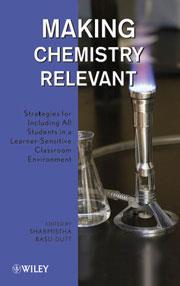Jacquie Robson reviews this book of case studies designed to capture the imagination

Sharmistha Basu-Dutt (ed)
New Jersey, USA: John Wiley & Sons 2010 | Pp289 | £53.50 | ISBN 978 047 027 898 7
Reviewed by Jacquie Robson
This book presents a broad spectrum of US-based case studies of innovative teaching methods for the university practitioner. The activities presented are student-centred, using a 'connected' approach to develop deeper undergraduate understanding.
Some of the theoretical rational provided for the methods used can be quite heavy-going for those not familiar with educational research ideas, but the case studies are, in general, easy to read and interesting.
An overriding theme is the introduction of context-based learning activities. Case studies are designed to capture the students' (and teachers') imagination.
For example, the Science of Terrorism explains how the story of the real-life investigation into the poisoning of former Russian KGB agent Alexander Litvenenko was used to teach undergraduate students about atomic structure, periodicity and nuclear chemistry. Many of the activities could also be transferred to the sixth form chemistry classroom. Further contexts are provided in which to teach a wide variety of chemical concepts including green chemistry, forensics and space science.
The second half of the book focuses on the introduction of inquiry-based approaches to teaching. Problem-based learning and related approaches are summarised and case studies provided to inspire creative teaching in both the lecture hall and laboratory. Ideas to promote the inclusion of visually impaired students in practical work may prove to be particularly helpful.
A summary of interactive media techniques currently used to teach chemistry includes the use of the increasingly popular student response systems in lectures.
Overall, this is not a book that requires reading from cover to cover; rather, it can be 'dipped into' for inspiration when developing new resources to capture the imagination of our chemistry students.
Related Links
Purchase the book from Wiley






No comments yet